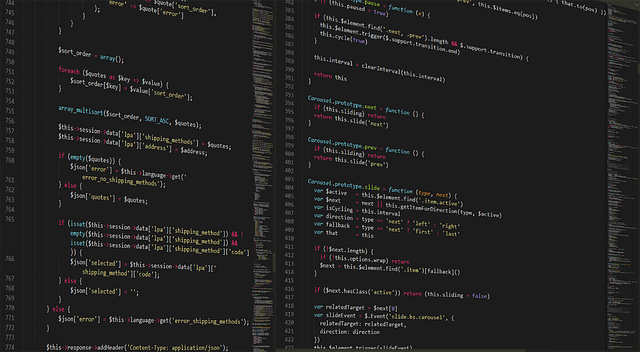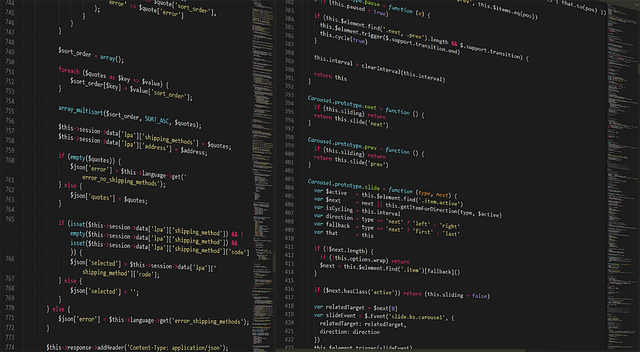Identity resolution software is a pivotal tool in enhancing fraud detection systems by integrating and analyzing data from diverse sources to provide a comprehensive view of activities associated with each individual. This software employs sophisticated algorithms capable of detecting irregular patterns and connections that may indicate fraudulent behavior, particularly in real-time scenarios where immediate analysis is crucial. It helps organizations accurately identify suspicious actions, reducing the risk of identity theft and fraud by leveraging machine learning to continuously improve its predictive capabilities. The software ensures compliance with regulatory standards, aids in maintaining data accuracy, and streamlines operations, all while safeguarding business integrity and fostering trust. It excels in real-time data analysis, pattern detection, and the application of both supervised and unsupervised learning techniques to match identities across various sources, effectively unearthing complex fraud schemes. By connecting related identities, it enhances transaction analysis, which is indispensable for combating sophisticated fraud strategies that employ multiple accounts or pseudonyms. This software is integral to advancing fraud detection efforts, offering a balance between security and user experience, and ensuring the integrity of digital systems against evolving threats while adhering to data protection laws like GDPR and CCPA. It emphasizes transparency and privacy, making it an essential component in protecting against identity-related crimes and fraud within the digital landscape.
Navigating the complex landscape of digital security, identity resolution software emerges as a pivotal tool in the arsenal against fraud. This article delves into the critical features that distinguish exemplary fraud detection tools, enhancing your understanding of their mechanisms and applications. From real-time data analysis to sophisticated machine learning algorithms, we explore how these technologies work in tandem to provide comprehensive risk scoring and cross-reference capabilities, ensuring robust protection across databases and systems. Additionally, we discuss the importance of integrating external data sources and maintaining a user-friendly experience to balance security with convenience. Join us as we unravel the intricacies of identity resolution software, the cornerstone of effective fraud prevention strategies.
- Understanding Identity Resolution Software: The Cornerstone of Fraud Prevention
- Real-Time Data Analysis: The Backbone of Effective Identity Resolution Tools
- Machine Learning Algorithms: How They Power Accurate Identity Verification
- Comprehensive Risk Scoring: Assessing Threat Levels with Advanced Identity Resolution Software
- Cross-Reference Capabilities: Ensuring Consistency Across Databases and Systems
- Integration with External Data Sources: Expanding the Horizon of Fraud Detection
- User Experience Considerations: Balancing Security with Convenience in Identity Resolution Solutions
Understanding Identity Resolution Software: The Cornerstone of Fraud Prevention

Identity resolution software plays a pivotal role in the landscape of fraud detection and prevention. By accurately matching identities across disparate data sources, this technology forms a cohesive view of each individual’s interactions, transactions, and behaviors. This capability is crucial for detecting anomalies that may indicate fraudulent activities. The software employs sophisticated algorithms to analyze patterns and linkages within the data, enabling organizations to identify potentially risky actions with greater precision. Its ability to integrate with various systems allows for real-time analysis, which is essential in environments where time sensitivity is paramount. The result is a robust defense mechanism against fraudsters who attempt to exploit system vulnerabilities by using false identities or engaging in identity theft. By implementing identity resolution software, businesses can significantly enhance their fraud detection efforts, leading to improved security and trust within their operations. This software not only streamlines the process of identifying discrepancies but also supports compliance with regulatory requirements, thereby providing a dual benefit of enhanced operational efficiency and adherence to legal standards.
Real-Time Data Analysis: The Backbone of Effective Identity Resolution Tools

Identity resolution software stands at the forefront of combating fraudulent activities by leveraging real-time data analysis. This advanced tool is pivotal in dissecting patterns and anomalies across various transactions, enabling a comprehensive view of the customer’s interactions with an organization. By analyzing data as it is generated, identity resolution software can swiftly match transactional data to known profiles or flag new identities for further investigation. This capability not only streamlines the process of recognizing genuine customers from imposters but also adapts to evolving fraud tactics in real-time. The immediacy of this analysis is crucial; it allows for prompt intervention, reducing the window of opportunity for fraudsters and minimizing potential losses. Moreover, the integration of machine learning algorithms enhances the system’s effectiveness over time, learning from previous interactions to improve accuracy and reduce false positives. As a result, businesses can confidently verify identities, mitigate risks, and maintain trust with their customers by employing identity resolution software equipped with real-time data analysis features. This not only fortifies the security framework of an organization but also optimizes operational efficiency, ensuring that every interaction is scrutinized for authenticity in a dynamic fraud landscape.
Machine Learning Algorithms: How They Power Accurate Identity Verification

Machine learning algorithms play a pivotal role in enhancing the capabilities of identity verification systems, particularly through identity resolution software. These sophisticated algorithms analyze vast datasets, identifying patterns and anomalies indicative of fraudulent activities. By learning from historical data, they can accurately predict and detect potential identity breaches, ensuring that genuine identities are verified with high precision. The integration of machine learning enables these systems to adapt to new threats in real-time, constantly refining their algorithms based on the latest data inputs. This dynamic approach to identity verification not only streamlines the process for legitimate users but also fortifies the security framework against malicious actors attempting to compromise personal information.
Furthermore, the best identity resolution software employs a combination of supervised and unsupervised learning techniques to match identities across different datasets with greater accuracy than traditional methods. Supervised learning algorithms are trained on labeled datasets, learning to classify data as either fraudulent or legitimate based on past outcomes. Unsupervised learning, on the other hand, discovers patterns in data without predefined labels, uncovering hidden connections that could indicate complex identity schemes. The synergy between these methodologies allows for a robust and versatile system capable of handling the intricacies of identity verification in an increasingly digital world.
Comprehensive Risk Scoring: Assessing Threat Levels with Advanced Identity Resolution Software

In the realm of fraud detection, comprehensive risk scoring stands out as a pivotal feature powered by advanced identity resolution software. This sophisticated technology is instrumental in assessing threat levels by synthesizing data from multiple sources to form a cohesive and accurate view of potential risks. It employs complex algorithms and machine learning techniques to analyze patterns, detect anomalies, and correlate disparate data points that may indicate fraudulent activity. The outcome is a nuanced risk score that reflects the likelihood of fraud, enabling businesses to allocate their resources more effectively and prioritize investigations where they are most needed. This dynamic scoring system is not static; it evolves continuously, learning from each interaction and transaction, thereby enhancing its predictive capabilities over time.
Furthermore, identity resolution software underpins the effectiveness of comprehensive risk scoring by accurately connecting related identities across various platforms. This capability is crucial in uncovering sophisticated fraud schemes that often rely on pseudonyms or multiple accounts to evade detection. By de-duplicating and linking these identities, the software provides a clearer picture of the true nature of transactions, helping to mitigate risks associated with identity theft, synthetic identity fraud, and other identity-related crimes. The integration of this advanced technology into fraud detection tools is a testament to the ongoing innovation in the field, ensuring that businesses are equipped with the means to stay ahead of increasingly cunning fraudsters.
Cross-Reference Capabilities: Ensuring Consistency Across Databases and Systems

Identity resolution software plays a pivotal role in the realm of fraud detection by leveraging cross-reference capabilities to maintain consistency across various databases and systems. This technology is adept at harmonizing disparate data sources, enabling organizations to achieve a unified view of transactions and customer identities. By employing sophisticated algorithms and matching techniques, these tools can compare and reconcile records from different systems, thereby identifying potential discrepancies or anomalies that may signal fraudulent activity. This cross-referencing process is not merely about finding matches but also about ensuring the accuracy and reliability of data across platforms, which is crucial for effective risk management and compliance.
Furthermore, identity resolution software enhances the precision of fraud detection by incorporating real-time data analysis. It can track interactions as they occur, aligning them with historical patterns to detect unusual behavior that deviates from established profiles. This capability is particularly beneficial in complex environments where transactions and interactions span multiple systems and databases. By maintaining consistency across these environments, the software fortifies the integrity of the data ecosystem, which in turn supports more robust and efficient fraud detection measures. The result is a significantly reduced risk of fraudulent transactions going undetected, thereby safeguarding both the organization’s assets and its customers’ interests.
Integration with External Data Sources: Expanding the Horizon of Fraud Detection

In the realm of fraud detection, the integration with external data sources plays a pivotal role in enhancing the precision and scope of fraud identification and prevention efforts. By leveraging identity resolution software, organizations can now extend their fraud detection capabilities beyond internal transactional data. This software enables the seamless incorporation of various external data sources, such as credit bureaus, public records, and social media platforms. The integration of these diverse datasets enriches the dataset available for analysis, allowing for a more comprehensive view of customer behavior and patterns that may indicate fraudulent activity. This holistic approach to data aggregation facilitates better risk assessment and mitigation strategies, ensuring that organizations can proactively address emerging threats. The fusion of internal transactional data with external sources not only broadens the horizon of fraud detection but also fortifies the security posture by uncovering complex fraud schemes that might otherwise evade detection due to limitations in data scope. As such, identity resolution software is instrumental in creating a robust framework for detecting and preventing fraud across multiple domains, thereby protecting both the organization and its customers from the adverse impacts of financial crime.
User Experience Considerations: Balancing Security with Convenience in Identity Resolution Solutions

In the realm of fraud detection, identity resolution software stands at the forefront of mitigating unauthorized activities while maintaining a user-centric approach. A pivotal aspect of these solutions is their ability to balance stringent security measures with a seamless user experience. Effective identity resolution requires the accurate matching and aggregation of data across various platforms, ensuring that legitimate users can navigate systems without undue friction. The best identity resolution software employs advanced algorithms and machine learning techniques to distinguish between genuine interactions and potential fraudulent attempts. This sophistication allows for the detection and prevention of identity-related fraud while minimizing the impact on user convenience. For instance, rather than imposing blanket restrictions that could affect legitimate users, these systems can employ adaptive authentication measures, which learn from user behavior to adjust security levels accordingly. This dynamic approach not only enhances trust in the system but also ensures compliance with data protection regulations, such as GDPR and CCPA. As a result, the most effective identity resolution solutions are those that prioritize a transparent, respectful interaction with users, thereby fostering an environment of mutual trust and security. Users benefit from robust protection against identity theft and fraud without the hassle of excessive verification steps, making these tools indispensable in the ongoing battle against digital fraud.
Identity resolution software plays a pivotal role in the ever-evolving landscape of fraud detection. By harnessing real-time data analysis and advanced machine learning algorithms, these tools deliver comprehensive risk scoring, ensuring that threats are accurately assessed and effectively mitigated. The seamless cross-reference capabilities across databases and systems further fortify this security infrastructure while integrating with external data sources broadens the scope of fraud detection. It is crucial for organizations to also consider user experience in their identity resolution solutions, striking a balance between robust security measures and maintaining a frictionless interaction for legitimate users. In essence, the best features of fraud detection tools are found within the core functionalities of identity resolution software, making it an indispensable asset in safeguarding against unauthorized activities.



